 This month’s Industry Insider interview is with Elizabeth Bennett, a Senior Literary Agent and Partner at Transatlantic Agency. She’s spent her entire career in the children’s publishing industry, having worked in marketing, product development, and editorial at such companies as Scholastic, Reader’s Digest, and Houghton Mifflin Harcourt. One especially cool thing she did at HMH was establish an IP program that launched several middle grade series, including The Next Best Junior Chef, Survivor Diaries, and Junior Ninja Champion.
This month’s Industry Insider interview is with Elizabeth Bennett, a Senior Literary Agent and Partner at Transatlantic Agency. She’s spent her entire career in the children’s publishing industry, having worked in marketing, product development, and editorial at such companies as Scholastic, Reader’s Digest, and Houghton Mifflin Harcourt. One especially cool thing she did at HMH was establish an IP program that launched several middle grade series, including The Next Best Junior Chef, Survivor Diaries, and Junior Ninja Champion.
Let’s get right to the interview to find out more about Elizabeth and her career!
RVC: At what point did you first fall in love with books?
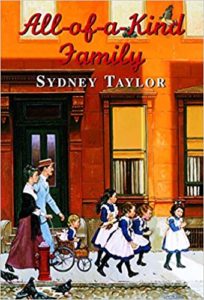 EB: When I was in third grade I read the All of a Kind Family series by Sydney Taylor. I loved them so much that I wrote to the author and asked if she was planning on writing more. She wrote back (SHE WROTE BACK!!!) telling me she hoped to some day write more books in the series (spoiler, she did…) and suggested another book she had written. I’m pretty certain that hearing from the author of a beloved book series cemented my love of reading.
EB: When I was in third grade I read the All of a Kind Family series by Sydney Taylor. I loved them so much that I wrote to the author and asked if she was planning on writing more. She wrote back (SHE WROTE BACK!!!) telling me she hoped to some day write more books in the series (spoiler, she did…) and suggested another book she had written. I’m pretty certain that hearing from the author of a beloved book series cemented my love of reading.
RVC: I had the same kind of thrill with Piers Anthony when I wrote him a handscrawled letter about his bestselling Xanth series. He wrote back to me, too! Crazy, right?
When did you go from being an avid reader to knowing books would be your career?
EB: I should have known that a career in children’s books was the right path for me (my favorite course in college was a children’s literature), but I actually stumbled upon it. I wanted to work in children’s television, but back in the 80s there weren’t as many opportunities in kids TV, and the job market was tight all around. Fresh out of graduate school, with a degree in communications, I took the first job I could find–a marketing position at Scholastic. I changed lanes throughout my career, but from that point on, I stayed on the publishing road.
RVC: What type of training did you have along the way to prepare you for success in the publishing industry?
EB: The knowledge base I have from a child study major in college and a communications degree have certainly helped, but in publishing, much of the training happens organically. You listen, you question, you take chances, you grow…
RVC: You spent a good bit of time on the editing side of things. What are some of the key lessons you learned that help you in your work as an agent?
EB: I know that some successful agents don’t have experience on the editorial side and I’m flummoxed by (and slightly in awe of) them. For me, the ability to help my clients finesse their manuscripts before they go out on submission has been key. Because of the volume of my work, I can’t do the kind of line edits that I did as an editor (nor is that my strength), but I know how to make a good manuscript better, getting it ready for submission–while leaving room for the acquiring editor to take it on and make it really sing.
RVC: Scholastic is kind of the 800-pound gorilla in the kidlit world. What was it like working for them?
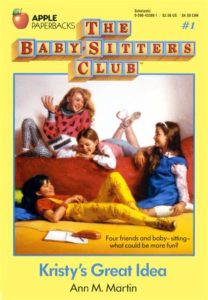 EB: So many of us in the industry cut our teeth at Scholastic. When I started there, some of the big brands it is known for were just being launched–Goosebumps, The Babysitters Club, The Magic School Bus. It was an incredibly exciting time to be in publishing and Scholastic was small enough then that we all felt like we were a part of it. To this day, I’m still close to many of the people I worked with there–it truly was a great training ground.
EB: So many of us in the industry cut our teeth at Scholastic. When I started there, some of the big brands it is known for were just being launched–Goosebumps, The Babysitters Club, The Magic School Bus. It was an incredibly exciting time to be in publishing and Scholastic was small enough then that we all felt like we were a part of it. To this day, I’m still close to many of the people I worked with there–it truly was a great training ground.
RVC: I’m sure OPB readers will want to know about franchise publishing—you worked on Doc McStuffins, Hello Kitty, and Clifford, among others. What’s different about working with a franchise?
EB: I’ve worked on brands both as an editor and writer–brands from Scholastic, Disney, Nickelodeon, Marvel, and more. With a franchise, you have to keep the brand bible in mind–the world has already been created and there are boundaries that you have to keep inside of, but you still have the opportunity to tell stories. Franchise publishing is a great entry point for many readers, so I’m a big fan.
RVC: You’ve also worked with some big-time classics at HMH (Curious George, Little Blue Truck, and The Little Prince). What was the best thing about working with those?
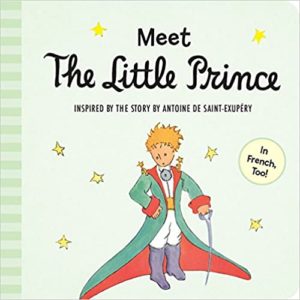 EB: It’s really fun to take a classic character and find a new story to tell or a new format to try. Curious George can celebrate Ramadan. Little Blue Truck can find baby animals on a farm. Toddlers can be introduced to The Little Prince in a series of board books.
EB: It’s really fun to take a classic character and find a new story to tell or a new format to try. Curious George can celebrate Ramadan. Little Blue Truck can find baby animals on a farm. Toddlers can be introduced to The Little Prince in a series of board books.
RVC: You’ve been at your current agency for some time now. Why is Transatlantic Agency a good fit? What do they do especially well?
EB: We are lean and nimble. Small enough for each of the agents to have autonomy, but established enough to have the systems we need to run our businesses and support our clients. We each are independent contractors, but we come together as an agency to share thoughts, experience, and knowledge. I also love that we have agents and clients on both sides of the Canada/US border–we can offer our clients a broader market and network.
RVC: Recently, you were made a Partner at the agency. Congrats on that! What does that mean for you? Do your day-to-day duties change?
EB: I’ll be honest, the appointment was more of an honor than a promotion. It doesn’t change my day-to-day responsibilities. But it does mean that I have more of a stake and interest in the operations of the agency. And it was lovely to be recognized for my work considering that I’m relatively new to agenting.
RVC: You’ve been involved with a lot of graphic novels, so you’re the ideal person to ask this question. More and more, I see publishers making graphic novels for kids. What’s the difference between those and picture books?
EB: Well, the easiest answer is that picture books are for young children–ages 2–5 or so–while graphic novels are for readers of all ages and, as of late, can be found across all genres. But it’s more than that. With a graphic novel, readers are drawn into the storytelling in a way that they may not be with a more traditional text. The pacing and emphasis on action can be captivating and a real bonus for more reluctant readers. Inference comes into play. Using visual cues, readers make connections they may not have to make when storytelling is done through text alone. They build comprehension and critical thinking skills.
Let’s just say, I’m a big fan!
RVC: Me, too! I love them.
Let’s talk submissions. What’s one thing you see too often in picture book manuscripts that ultimately earns a pass from you?
EB: I’m open to accepting a rhyming picture book text, but I see too much bad rhyme. Writing in rhyme is easy–doing it well is really, really hard. That’s why many agents and editors won’t even look at a text that’s written in rhyme.
RVC: You’re busy enough these days that you’re only accepting submissions from non-clients by referral only. I don’t ask this question enough—what’s an effective way to get a referral without being pushy, aggressive, or stalkery?
EB: I will always look at a submission that comes through a client of mine or a colleague. So, the best way to get a referral is through relationships.
- Do you have a peer in a critique group who is agented?
- Did you meet an editor at a conference?
- Did you go to school with someone in the business?
But, I’ll add that if an agent is closed to submissions, it’s usually because they truly aren’t looking to grow their list. Better to focus on agents who are actively acquiring–your chances are just that much better of getting an offer.
RVC: That last point is really astute. OPB readers, take heed!
Now, I often hear that it’s important for early career authors to be active on social media.
EB: Some of my clients are very active on social media – others not so much. And I always tell them that it’s up to them. Social media is a great way to grow a platform, to make connections, to self-promote. But I don’t want anyone to think they have to be active on social media–unless of course fame and recognition is part of their pitch (i.e. a celebrity book).
RVC: Brag time. What’s a book project or two you’re working on that you’re really excited about?
EB: Ack–so many. But I’ll mention a few.
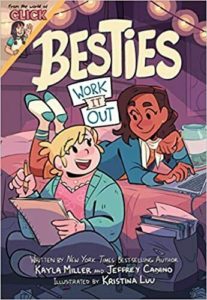 Kayla Miller, the creator of the NYT best-selling graphic novel Click series, has collaborated with writer Jeffrey Camino and illustrator Kristina Luu on Besties–a spin-off series which is launching in October. It’s exciting to see this franchise grow.
Kayla Miller, the creator of the NYT best-selling graphic novel Click series, has collaborated with writer Jeffrey Camino and illustrator Kristina Luu on Besties–a spin-off series which is launching in October. It’s exciting to see this franchise grow.
Damian Alexander’s Other Boys, a touching and poignant graphic memoir about transcending trauma and embracing self, is receiving a lot of (deserving) buzz, and Debbie Dadey is authoring a picture book memoir about Kati Kariko, the woman who’s mRNA research led to the development of the COVID vaccine. It’s the kind of story we need right now.
RVC: Okay, Elizabeth. It’s time for the Speed Round! ARE YOU READY?!?
EB: Ready!
RVC: Favorite place to get a terrific slice of pizza?
EB: I love pizza, but as a New Englander, I’m going to go lobster roll here–Alive and Kickin’ Lobsters in Cambridge is my hands-down favorite.
RVC: A surprising song that’s on your current playlist?
EB: Shameless plug for my daughter’s boyfriend, Carson McKee. Any song by his group, The Other Favorites–everyone I recommend their music to becomes a fan.
RVC: If your life were a Hollywood movie, which actress would play the role of you?
EB: How about Annette Bening–Annette Bening in An American President…
RVC: What’s the One That Got Away?
EB: I won’t mention any names but there was a YA rom-com that I really should have taken on–great title, great concept. It’s already been acquired and has a movie deal. I really regret letting that one slip away…
RVC: A recent picture book that really got your attention?
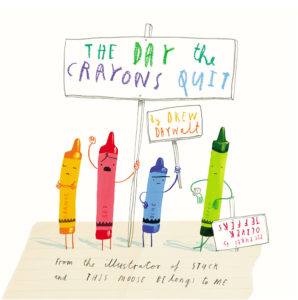 EB: The Day the Crayons Quit is a recent favorite – so clever!
EB: The Day the Crayons Quit is a recent favorite – so clever!
RVC: Five words that describe your picture book philosophy.
EB: I can do it in four: Never seen this before.
RVC: Thanks so much, Elizabeth. It was great getting to know you and your work better, and congrats on making Partner at the agency!

